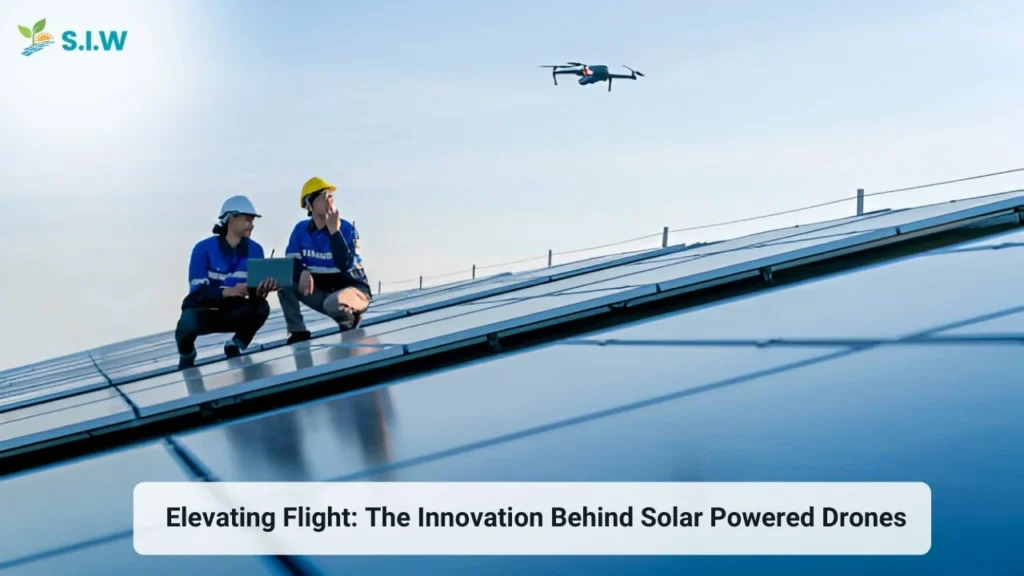Solar powered drone gliding effortlessly through the sky, entirely powered by solar energy. This isn’t a far-fetched idea; it’s a transformative reality that’s reshaping technology and sustainability. Solar-powered drones utilize solar panels to capture sunlight, converting it into energy that fuels their operations. This advancement opens up exciting opportunities across various sectors, from agriculture to disaster relief.
Solar-powered drones mark a significant advancement in energy-efficient technology, reducing reliance on fossil fuels and promoting a greener environment. By harnessing the sun’s energy, these drones can fly longer distances and perform diverse tasks without needing frequent recharges.
The Fundamentals of Solar Power
To grasp how solar-powered drones operate, we must first understand the basics of solar power. Solar panels consist of photovoltaic cells designed to convert sunlight into electricity through three primary steps:
- Absorption: Sunlight strikes the solar panel and is absorbed by the photovoltaic cells.
- Conversion: The absorbed sunlight excites electrons within the cells, generating an electric current.
- Usage: The electricity produced is either stored in batteries or used directly to power devices like drones.
Top Advantages of Solar-Powered Drones
Solar-powered drones offer numerous benefits, making them appealing for various applications:
- Extended Flight Duration: These drones can remain airborne for significantly longer periods than traditional models, which rely on batteries that need frequent recharging. By harnessing sunlight during the day, solar drones can operate continuously without interruptions.
- Environmental Benefits: By utilizing renewable energy, solar-powered drones help lower carbon emissions associated with fossil fuel-powered drones. This transition not only reduces pollution but also plays a vital role in combating climate change.
- Cost-Effectiveness: Although the initial investment in solar technology can be substantial, the long-term savings are significant. With reduced fuel consumption and maintenance costs, solar drones become a more economical solution for businesses.
- Versatile Applications: These drones can serve multiple sectors, including agriculture, surveying, and surveillance. They can efficiently monitor crops, conduct aerial surveys, and gather real-time data without requiring fuel refills, making them highly adaptable.
Everyday Uses of Solar-Powered Drones
The practical applications of solar-powered drones are diverse and impactful. Here are some notable examples:
Agricultural Monitoring
Farmers increasingly employ solar drones to monitor crop health. Equipped with cameras and sensors, these drones can evaluate vegetation, detect pests, and even assess soil conditions. Their ability to cover vast areas swiftly saves time and provides essential data for enhancing yields.
Disaster Relief and Recovery
In disaster situations, solar-powered drones can be incredibly valuable. They can deliver vital supplies, assess damage, and help coordinate rescue operations. For example, following natural disasters, these drones can survey affected regions without endangering human lives.
Environmental Monitoring
Organizations utilize solar drones to track environmental changes such as deforestation, water quality, and wildlife habitats. Their capacity to cover large areas makes them ideal for monitoring shifts over time and gathering critical research data.
Challenges Facing Solar-Powered Drones
Despite their advantages, solar-powered drones face several challenges that need to be addressed to enhance this technology:
Weather Dependency
Solar drones depend on sunlight for energy. Cloudy days, rain, or snow can impede their performance and reduce flight durations. Consequently, they may not be suitable for operations in regions with consistently poor weather conditions.
Energy Storage Limitations
While advancements in battery technology have been made, energy storage efficiency remains a concern. The energy generated by solar panels may not always meet the demands of the drone, especially during peak usage.
Initial Investment Costs
The price of solar-powered drones can be higher than that of traditional drones due to the integration of solar technology. This initial expenditure can deter some users, particularly small businesses or individual operators.
The Future of Solar-Powered Drones
The outlook for solar-powered drones is bright. With ongoing technological advancements, we can anticipate improvements in energy efficiency, battery capacity, and overall performance. Research and development play a crucial role in addressing current limitations and expanding the capabilities of solar drones.
Personal Experiences with Solar Drones
In my encounters with solar-powered drones, I’ve found them to be both intriguing and effective. Watching a drone take off and glide gracefully while harnessing solar energy is a captivating experience. One memorable moment was using a solar drone to survey a local park, where the data collected was exceptionally detailed, and the flight time exceeded my expectations.
Final Thoughts
Solar-powered drones are paving the way toward a sustainable future. They provide extended flight times, environmental advantages, and versatility across various applications. While challenges remain, continuous advancements in technology promise to surmount these obstacles.
By embracing solar energy, we can reduce our carbon footprint and devise innovative solutions for everyday challenges. As we gaze into the future, solar-powered drones symbolize a significant step toward a greener tomorrow.
Frequently Asked Questions
What are solar-powered drones?
Solar-powered drones are equipped with solar panels that harness sunlight, converting it into energy for flight. They are designed to be environmentally friendly and cost-effective.
How long can solar drones fly?
Solar drones can maintain longer flight durations compared to traditional drones, as they recharge using sunlight during the day. Flight times vary based on battery capacity and weather conditions.
What are the primary applications of solar-powered drones?
Solar drones find use in agriculture, disaster relief, environmental monitoring, and surveillance, showcasing their adaptability across different sectors.
What limitations do solar-powered drones face?
Limitations include reliance on weather conditions, challenges in energy storage, and higher initial costs compared to traditional drones.
Are solar-powered drones cost-effective?
While they may have higher upfront costs, solar-powered drones can lead to significant savings over time through lower operational expenses and reduced fuel consumption.








